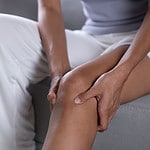Introduction
Swimmers with knee pain may feel joint discomfort when doing physical activities. Swimming is good for joint-friendly routines due to its low impact. There are exercises designed for swimmers with knee pain that can strengthen muscles and reduce pressure on the joints. Doing these exercises correctly can bring positive physical and mental wellbeing.
This guide will provide five joint-friendly exercises for swimmers with knee pain. These exercises are recommended by physiotherapists and sports medicine practitioners. Following this guide can help swimmers with knee pain have better control and comfort while swimming. This reduces the risk of further damage or complications from lap swims and other exercise routines.
Types of Knee Pain
Swimmers often suffer from knee pain. It can be caused by overuse, arthritis, or ligament tears. To reduce pain and prevent further damage, it’s important to choose joint-friendly exercises. We’ll now look at different types of knee pain and what exercises are best for each:
Patellofemoral Pain Syndrome
Patellofemoral Pain Syndrome (PFPS) is a condition that causes knee pain. It is caused by an imbalance of muscles and tendons around the knee joint. This can be made worse by tightness in hip, calf and ankle muscles.
To treat PFPS, swimmers should rest from swimming and land-based exercises. Low-impact activities like walking, cycling and swimming in a pool without resistance machines are good.
Strengthening exercises for hip stability, stretching to relax calf muscles, hamstring muscles and IT band, and balance exercises for core abdominal muscles are important too. Doing these activities can help swimmers with PFPS, while still enjoying their sport.
Osteoarthritis
Osteoarthritis is a common type of knee pain. It happens when the cartilage that covers the bones in your joints wears out. This cartilage helps to stop friction from happening when you move. As we age, the cartilage isn’t as helpful. So, it can cause pain, stiffness, and swelling. There can also be bone spurs or bone on bone contact.
Osteoarthritis is a chronic condition. It can cause lasting damage if it’s not taken care of. To help with the pain, your doctor might suggest medications or shots. Physical therapy and lifestyle changes can also help. Surgery might be needed if the osteoarthritis is severe.
Joint-friendly Exercises
Swim to get fit without stressing your joints – but if you’ve got knee pain, even easy strokes can hurt. It’s important to know which exercises are best if you’re suffering from knee pain. Here, we’ll cover exercises that could ease your pain:
Swimming
Swimming can be a great form of low-impact exercise for those with knee pain. By focusing on good form and technique, swimmers can target specific muscles to strengthen abdominal, glute, and hip stabilizing muscles, creating a supportive base for their knees.
There are several joint-friendly swimming exercises that can help improve endurance and strength for people with knee pain. These include:
- Straight-Leg Kick. This exercise involves kicking out straight, using calf muscles without straining the knees. To make it harder, special ankle weights can be used.
- Half Squats. Squat down halfway into a sitting position in the pool while flutter kicking. This strengthens lower body muscles and core stabilizers.
- Crisscross Kickbacks. Float horizontally in water deep enough to open legs fully. Cross one leg over the other behind. This strengthens peripheral muscular attachments onto patellar tendons, helping to restore optimal brain neuron patterns and improved biomechanical relays pathways.
Strength Training
Strength training can be daunting, especially for swimmers with knee pain. But it’s key for lessening joint pain during swimming. Strengthening the muscles around joints helps stop more harm and lessen the ache of recurring use.
For swimmers aiming to gain strength, but not hurt their injury, there are several exercises that help ease the pain while still building muscle around your joints. These are:
- Lateral lunges: Stand with feet hip-width apart. Take a large step rightward in an athletic stance (bent knee, toes pointing forward). Press off both feet to return to standing position. Do this 10 times on each side.
- Planks: Lie face down on a mat/flat surface. Push onto toes so all body parts are in line (neither sagging nor sticking up). Hold for 10 seconds. Rest 10 seconds then repeat 8 times.
- Wall sits: Stand away from wall with feet shoulder-width apart & hip-distance away. Lean back into wall until thighs are parallel with floor (knees bent). Hold for 30 seconds then stand up. Repeat 3 times when starting out or 5 if you’ve been strength training for a bit.
For any athlete with joint pains, always talk to a doctor before beginning a new workout plan or routine, particularly if it involves strength training like these exercises.
Squats
Squats strengthen muscles in the lower body. This includes your hips, legs, and core. The knee joint is supported by the surrounding muscles during this exercise. When done properly, squats can help balance, posture, and strengthen joint muscles.
To do a basic bodyweight squat:
- Feet hip-width apart and arms straight out for balance.
- Chest up and abs tight.
- Bend your knees, pushing your hips back like sitting in a chair.
- Descend to 90 degrees (or lower).
- Push through heels to stand, then repeat for 8-12 reps.
Lunges
Lunges are a great way to stabilize knee joints. Stand with feet at hip-width apart. Step forward with one foot and plant the heel. Lower the back knee towards the ground without any pain. Pause and push up.
- Do 8 reps on each side for 3 sets.
- Increase resistance with single arm weights or a barbell.
- Lift the chest, don’t look down at your feet!
Step-ups
Step-ups are ideal for swimmers with knee pain. They are joint-friendly and effective exercises.
To do them, stand in front of a raised platform with feet hip width apart. Step one foot onto the platform, pushing through the heel. At the top, both legs should be nearly straight with a slight bend in the knee for balance. Slowly step back down, with body weight between both feet on the floor. Repeat on alternating sides until two to three sets of ten reps is reached. Do this twice a week for best results.
Step-ups engage core muscles and glutes without overloading the joints.
Plank
Planks are awesome for your core! With the right technique, other joints in the body get stronger and more stable too. This low-impact exercise helps you to build strength and stamina without hurting your joints.
To plank correctly, start by lying on your stomach. Put your elbows bent and palms flat on the floor. Lift up onto your toes, engaging your core and drawing your bellybutton towards your spine. Stay there for 30 seconds, or until you’re tired. To make it harder, hold it for a minute, or lift one foot off the floor at a time.
Planks are great for total body strength, and they’re especially important for protecting older adults’ joints from arthritis or pain. This move should be part of any workout if joint health is a priority.
Stretching
Stretching is vital in any exercise. It boosts flexibility and range of movement, making performance better and reducing injury risk. When you have knee pain, stretch to keep your muscles flexible, strong, and able to support your joints properly.
Stretches for swimmers with knee pain should target hip flexors, hamstrings, quads, and calves. These stretches are great:
- Lying Hamstring Stretch: Lie on your back. Bend one leg at 90 degrees. Use a towel or strap to hold the lifted foot. Stretch the hamstring until a mild tension is felt. Hold for 30 seconds. Do this three times per leg.
- Hip Flexor Stretch: Kneel down. Bend one leg in front at 90 degrees. Place both knees on the floor. Push hips forward until mild tension is felt. Hold for 30 seconds. Do this three times per side.
- Standing Calf Stretch: Stand two feet away from a wall. Place feet together or slightly apart in a wide lunge. Raise heels until standing on toes. Push chest towards wall without losing heel contact with the floor. Hold for 15 seconds. Do this three times per side.
- Quadricep Stretch: Stand behind a chair or bed. Lift one foot up towards the glutes. Hold the stretch for 15 seconds. Do this three times per side.
Calf Stretch
Calf stretches are awesome exercises for reducing pain and tension in your lower body. Do them safely, seated or standing.
- Standing: Stand in front of a wall or flat surface. Place both hands against the surface for balance. Extend one leg back. Keep your heel flat on the floor, toes pointing up. You’ll feel a slight stretching sensation. Remain there for 10 seconds, then switch legs.
- Sitting: Raise the toes off the ground. Lean forward from your hips until you feel a stretch. Hold for 10 seconds, then switch legs.
Do each calf stretch 10 times. Then press into the wall with extra force. Extend and pull toward yourself as deeply as possible. Hold for 10 seconds before switching legs.
Quadriceps Stretch
The quadriceps stretch is a straightforward yet successful way to help keep your joints flexible and reduce tight-muscle-related pain. When performed correctly, this exercise can boost flexibility and motion-range in your joints.
To perform the quadriceps stretch:
- Stand tall with feet shoulder-width apart.
- Bend one leg towards your buttock.
- With one hand, grab the ankle and keep good posture.
- Hold for 15-30 seconds, then slowly release your foot to the ground.
For good joint health, do this stretch on each side of the body at least 2-3 times per day.
Hip Flexor Stretch
Doing a hip flexor stretch is an important part of any exercise program. It can help with knee pain. The stretch targets the hip flexors and other muscles in the hips and thighs.
To do it:
- Start in a forward lunge position. One knee is on the ground and the other leg is bent with foot pointed outward.
- Put your arms overhead and interlock your fingers behind your head (or use a foam roller or ball).
- Push your hips forward until you feel tension in your upper leg or buttock (hold for 15 seconds).
- Change legs and do step 3 again (2 sets per side).
- Finish with backwards marching while keeping your pelvis level (do 10 times).
Conclusion
To summarize, joint-friendly exercises are really important for swimmers with knee pain. They can help reduce pain and improve performance. Strengthening routines should include a warm-up and cool-down. Stretching before and after exercises can reduce tension and increase range of motion. Low-impact strokes such as backstroke or sidestroke are best for minimizing strain on the knees.
Frequently Asked Questions
Q: What exercises can I do to help with knee pain?
A: Swimming is a great exercise for those with knee pain because it is a low-impact exercise that is joint-friendly. Exercises like leg lifts, hamstring stretches, and single leg squats can also help build strength and flexibility in your legs, which can help relieve knee pain.
Q: What type of swimming stroke is best for knee pain?
A: The breaststroke is often recommended for those with knee pain because it is a low-impact stroke that puts less stress on the knees than other strokes such as the butterfly or freestyle.
Q: Are there any other tips I should consider when swimming with knee pain?
A: It is important to ensure that you are using proper technique when swimming. Make sure you are not over-bending your knees and be sure to take breaks when needed. Additionally, wearing a knee brace may provide additional support and help reduce pain.





